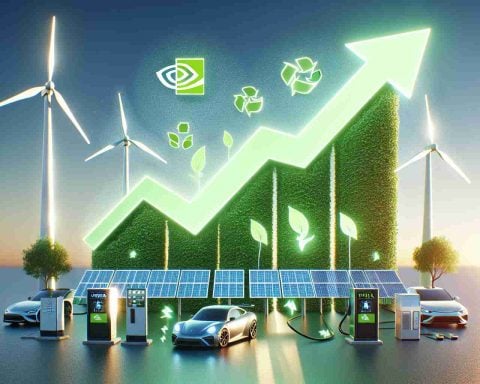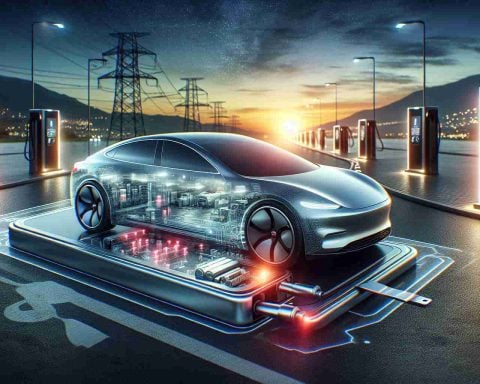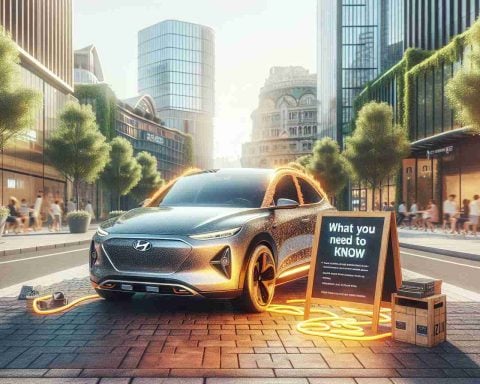- Low-speed electric vehicles (LSEVs) are gaining popularity in China’s smaller cities due to their affordability and practicality.
- These vehicles do not require a driver’s license, making them accessible for many residents.
- Charging an LSEV is inexpensive, typically costing less than a few dollars for 100 kilometers.
- LSEVs often serve as family-friendly alternatives, useful for daily commutes and school runs.
- With prices ranging from 10,000 to 20,000 yuan, LSEVs offer a cost-effective transportation option.
- The growing trend reflects a shift in consumer preferences, especially as larger cities become saturated.
- Government incentives are further supporting the adoption of LSEVs among rural residents.
In China’s bustling smaller cities, a quiet revolution is unfolding—low-speed electric vehicles (LSEVs) have captured the hearts and wallets of daily commuters. These quirky cars, often adorned with whimsical decorations, are a sight to behold on the streets of places like Tongbai County, Henan province, where practicality rules the day.
Imagine a vehicle that doesn’t require a driver’s license, costs less than a few bucks to recharge for 100 kilometers, and sidesteps the hassle of insurance and taxes. Residents like Wang Hong are opting for these pocket-friendly alternatives, using them to ferry children to school and commute to work. The allure of these vehicles lies not just in their affordability but also in their user-friendly nature—ideal for families navigating their daily routines.
Unlike high-end brands flaunting luxury and advanced technology, LSEVs embrace simplicity and function. Brands like Weimi have gained traction with their catchy slogans aimed at families, hinting at education and a brighter future. These vehicles typically cost between 10,000 to 20,000 yuan, with promising ranges of up to 200 kilometers on a single charge.
But this trend goes beyond just personal convenience; it’s a reflection of the changing consumer landscape. As the market in larger cities grows saturated, the potential in smaller towns is undeniable. With 77.5% of the population living in these regions, businesses are recognizing that “whoever masters the sinking market masters the world.”
Favorable government policies are boosting this surge further, with incentives encouraging rural residents to adopt electric vehicles, positioning LSEVs as a gateway to a burgeoning automotive market. As these charming little cars draw more attention, they are proving that when it comes to transportation, sometimes the simplest solutions are the best.
Revolution on Wheels: Why Low-Speed Electric Vehicles are Dominating China’s Smaller Cities
The Rise of Low-Speed Electric Vehicles (LSEVs) in China
In China’s smaller cities, a transformative trend is taking place as low-speed electric vehicles (LSEVs) become increasingly popular among daily commuters. These accessible and budget-friendly vehicles are reshaping the transportation landscape, especially where traditional cars and public transport may not suffice.
# Pros and Cons of LSEVs
Pros:
– Affordability: LSEVs typically cost between 10,000 to 20,000 yuan, making them a feasible option for many families.
– Low Operational Costs: Charging an LSEV costs only a few yuan for 100 kilometers, enhancing their appeal for daily use.
– No License Required: Many LSEVs can be used without a driver’s license, broadening their accessibility.
– Environmentally Friendly: They contribute to reducing urban pollution compared to traditional gasoline vehicles.
Cons:
– Limited Speed and Range: Operating at lower speeds may limit their functionality for longer trips.
– Safety Concerns: With less robust design and safety features compared to conventional vehicles, there may be increased accident risk.
– Regulatory Hurdles: As the market grows, stricter regulations may come into play that could affect availability and usage.
Market Insights and Trends
The market for LSEVs is experiencing significant growth, driven by rural consumers’ rising wealth and the desire for convenient personal transport. According to market forecasts, the LSEV sector is expected to expand significantly as manufacturers continue to innovate their product offerings, balancing safety with affordability.
# Key Specifications and Features
– Vehicle Types: LSEVs vary widely in design, catering to families, delivery services, and personal commutes.
– Charging Infrastructure: The widespread availability of charging stations in urban and suburban areas supports the increased usage of these vehicles.
– Customization: Consumers can choose from a variety of designs and feature sets tailored to their lifestyle needs.
Predictions for LSEVs in 2024 and Beyond
1. Increased Adoption: As more consumers in smaller cities opt for LSEVs, sales are expected to rise exponentially, with an estimated 10 million units projected by 2025.
2. Technological Advancements: Innovations in battery technology will likely lead to improved range and charging speeds, making LSEVs even more attractive.
3. Sustainable Initiatives: With a growing focus on sustainability, manufacturers of LSEVs may lean towards using eco-friendly materials and production methods to appeal to climate-conscious consumers.
Frequently Asked Questions
1. Are LSEVs safe for family use?
While LSEVs offer a practical solution for families with their low cost and ease of use, safety varies significantly among models. It’s essential to review safety features and consumer ratings before purchase.
2. What are the government incentives for LSEV owners?
Chinese government policies are currently favorable, offering subsidies and tax breaks for LSEV purchases. These incentives are designed to encourage the shift towards electric vehicles, particularly in less populated areas.
3. How do LSEVs compare with traditional electric vehicles (EVs)?
LSEVs are generally lower in speed, range, and price compared to mainstream EVs. They serve a distinct market segment focused on practicality and affordability rather than luxury or high performance.
For more insights on this exciting market shift, visit China Daily for news and updates about technological innovations in China.

















